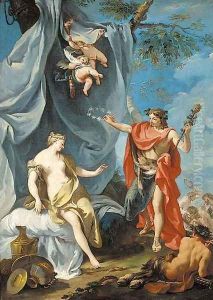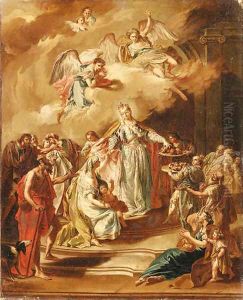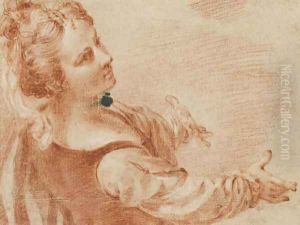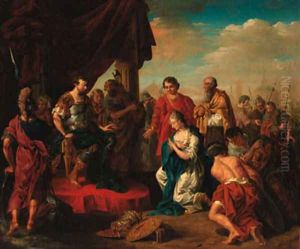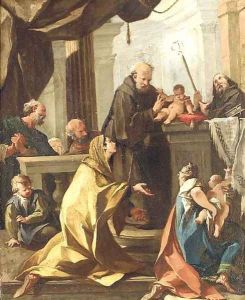Giovanni Battista The Younger Pittoni Paintings
Giovanni Battista The Younger Pittoni, born in 1687 in Venice, Italy, was a prominent Venetian painter of the Rococo period. Coming from a family with a rich artistic lineage, Pittoni was destined to leave a significant mark in the world of art. His uncle, Francesco Pittoni, was also a painter, which provided Giovanni Battista with an early exposure to the art world. This familial environment nurtured his talents, and by his teenage years, he was already developing a unique style that would become highly influential in European art.
Pittoni's work is characterized by its dynamic compositions, vibrant colors, and intricate details, which were emblematic of the Rococo style. He specialized in religious and mythological subjects, bringing a sense of grace and elegance to these traditional themes. His paintings often featured elongated figures, a soft use of light, and a rich, vivid palette that added a sense of depth and vitality to his scenes. Pittoni was also known for his skill in creating dramatic narratives within his works, making his paintings not just visually stunning but also emotionally compelling.
Throughout his career, Pittoni received numerous commissions from churches and aristocrats across Europe, which contributed to his fame beyond the Venetian Republic. He was an influential member of the Fraglia dei Pittori Veneziani (the Venetian Painters' Guild) and later became a founding member of the Venetian Academy of Fine Arts, established in 1750. Through these positions, he played a crucial role in shaping the future of Venetian art, mentoring younger artists and promoting the Rococo style.
Despite his success, Pittoni was known to be a private individual, and much of his life outside of his art remains obscured. He never married and dedicated his life to his craft, leaving behind a legacy of artwork that continues to be celebrated for its beauty and refinement. Giovanni Battista The Younger Pittoni passed away in 1767 in Venice, where many of his masterpieces can still be admired in churches and museums, testament to his enduring influence on the art world.
